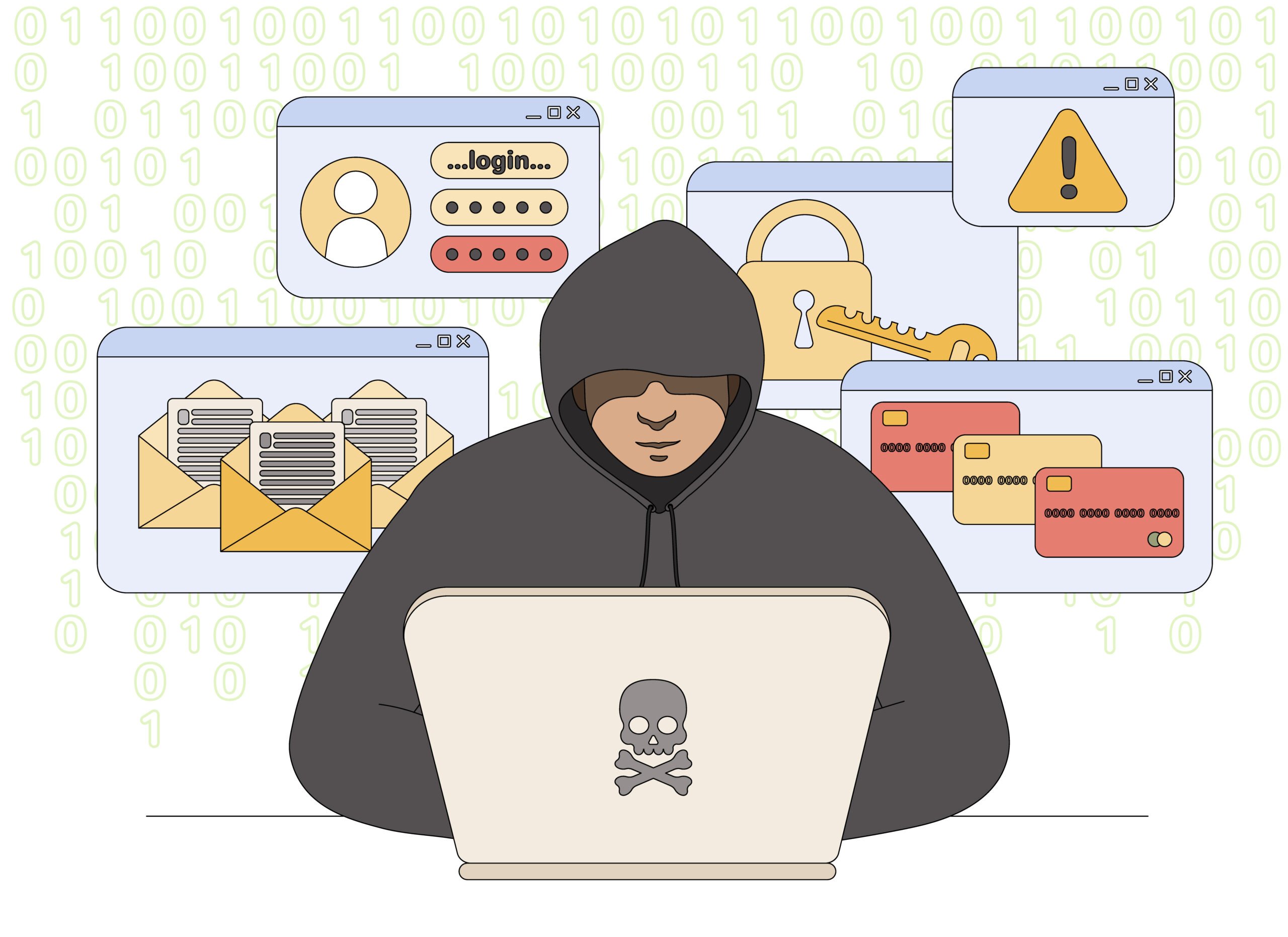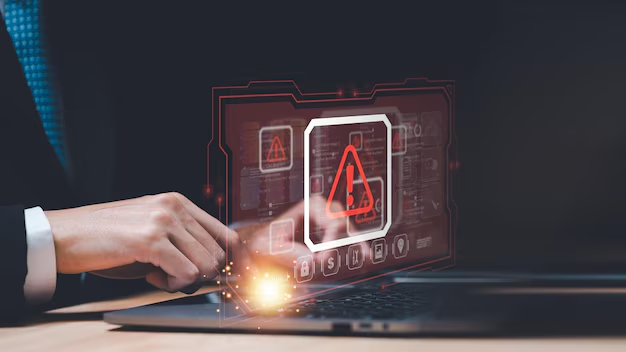Phishing attacks represent one of the most pervasive cyber threats facing businesses and individuals today, with cybercriminals using increasingly sophisticated tactics to steal sensitive information and compromise security.
Learning how to prevent phishing attacks is essential for protecting your personal data, financial accounts, and business operations from malicious actors who exploit human psychology and technical vulnerabilities.
From deceptive emails that mimic legitimate organizations to fake websites designed to harvest credentials, understanding these threats and implementing proper defenses can mean the difference between staying secure and becoming another cybercrime statistic in today’s digital landscape.
Related Service: Ciso Coaching
What Are Phishing Attacks and Why Are They Dangerous?
In our experience helping businesses strengthen their cybersecurity posture, a phishing attack represents one of the most prevalent cyber threats facing individuals and organizations today. These deceptive scams involve an attacker impersonating legitimate entities to steal sensitive information from unsuspecting victims. Understanding the four types of phishing attacks is crucial for protection: email phishing (the most common), spear phishing (targeted attacks), whale phishing (targeting executives), and smishing (SMS-based attacks).
The most common tactic used in phishing attacks involves creating malicious emails that appear legitimate, often mimicking trusted brands or institutions. These communications trick recipients into clicking harmful links or downloading infected attachments, leading to potential identity theft and data breaches.
Recognizing the seven red flags of phishing can prevent victimization: urgent language, suspicious sender addresses, generic greetings, unexpected attachments, requests for personal data, poor grammar, and mismatched URLs. Each phishing attempt aims to exploit human psychology rather than technological vulnerabilities.
The devastating impact of these types of phishing attacks extends beyond individual victims, affecting entire organizations through financial losses, reputation damage, and operational disruption. Organizations must also stay informed about emerging AI-powered cybersecurity threats to maintain comprehensive protection.
Related Topic: What Is Zero Trust Security? | Why Every Business Must Adopt It Now
The 5 Phases of a Phishing Attack Every User Should Know
Working with clients across various industries, we’ve observed that understanding phishing attacks requires examining the strategic 4 Ps of phishing: preparation, penetration, persistence, and profit. Each phishing attack follows a systematic approach designed to maximize success rates and minimize detection.
- Involves reconnaissance, where the attacker researches targets and creates convincing materials.
- Centers on delivery – the most common method for a phishing attempt involves sending a malicious phishing email that appears legitimate. The sender carefully crafts messages to spoof trusted organizations.
- Focuses on engagement, where victims interact with the phishing email through clicking links or opening an attachment.
- Exploits this interaction, often creating a sense of urgency that demands immediate action from recipients.
- Completes the cycle with data harvesting and monetization.
Throughout each phase, attackers refine their techniques based on response rates and security measures. Modern criminals also employ evolving credential stuffing attacks as part of their sophisticated arsenal.
Identifying phishing warning signs includes urgent language, unusual personal information requests, and mismatched sender addresses from supposed organizations. Each phishing attempt relies on psychological manipulation rather than technical sophistication.
Related Topic: Cybersecurity Awareness Training: Best Practices to Stop Cyber Threats
The Business Impact of Phishing: ROI of Prevention vs. Recovery
From our cybersecurity consulting practice, we’ve seen organizations that invest in the most effective solution to phishing attacks through comprehensive employee training combined with multi-layered security protocols see significantly lower incident rates and reduced recovery costs.
Phishing attacks remain difficult to prevent because they exploit human psychology rather than technological weaknesses. Unlike traditional cyber attack methods that target system vulnerabilities, phishing bypasses technical defenses by manipulating users into voluntarily surrendering their credential information. Attackers continuously evolve their techniques, making each phishing attempt more sophisticated and harder to detect.
The devastating impact of phishing attacks extends far beyond initial security breaches. Organizations face substantial financial loss from operational downtime, legal compliance costs, and reputation damage. When employees share passwords via malicious links, breaches occur, often spreading malware infections throughout entire organizational networks.
Prevention costs represent a fraction of recovery expenses. While implementing robust phishing education programs requires upfront investment, the alternative – dealing with successful phishing incidents – costs businesses an average of $4.45 million per breach. Smart organizations prioritize proactive phishing defense strategies over reactive damage control measures, often partnering with providers offering specialized cybersecurity services for small businesses to maximize protection while controlling costs.
Related Topic: What Is Ransomware and How to Stop It Before It Spreads
Essential Phishing Prevention: How to Protect Yourself from Phishing
Our security team consistently recommends that clients implement the top three best practices for avoiding phishing attacks: scrutinizing every email address before responding, verifying sender authenticity through independent channels, and maintaining healthy skepticism toward urgent requests. These fundamental steps help you avoid phishing scams that target unsuspecting users daily.
The four essential steps to protect yourself involve: first, examining suspicious emails carefully for grammatical errors and mismatched domains; second, never clicking links directly but navigating to websites independently; third, implementing strong password policies with unique credentials for each account; and fourth, enabling multi-factor authentication across all platforms.
Effective tools for preventing phishing include advanced email filtering systems that identify potential threats before reaching inboxes. Reputable security software provides real-time protection against phishing attempts by analyzing incoming messages and blocking malicious content. These solutions work alongside user education to create comprehensive defense strategies.
Smart users combine technological solutions with personal vigilance. Independent verification of suspicious requests through known contact methods remains one of the most reliable ways to protect against sophisticated phishing campaigns. Remember that legitimate organizations rarely request sensitive information via email, making verification protocols essential for maintaining security. Understanding protecting yourself against SIM swapping scams adds another layer to comprehensive personal security.
Related Topic: What is a Firewall in Networking? | Protect Your Network Like a Pro
Security Technology: Multi-Factor Authentication and Email Security
Our managed cybersecurity services use advanced email filters and strong authentication protocols to effectively reduce phishing attack risks. These complementary systems work together to identify and block phishing attempts before they reach end users.
The best defense against phishing combines technological solutions with user awareness training. Modern email security platforms analyze incoming phishing messages at the email server level, identifying suspicious patterns and blocking malicious emails automatically. These systems examine every attachment and link for potential threats, creating multiple barriers against successful attacks.
Multi-factor authentication serves as the primary method for preventing phishing-related account compromises. Even when users inadvertently provide credentials through deceptive schemes, additional authentication layers prevent unauthorized access. Advanced email client configurations can filter spam and quarantine suspicious communications before users encounter them.
Comprehensive protection requires layered security approaches. Organizations deploying enterprise-grade solutions effectively block phishing through real-time threat analysis, machine learning algorithms, and behavioral monitoring. These integrated systems examine sender reputation, content analysis, and user interaction patterns to identify emerging threats.
Effective phishing prevention combines advanced technology and continuous user education, ensuring security tools and human vigilance operate together seamlessly.
Related Topic: How to Tell If It’s a Scam: Real Phishing Examples Exposed!
Comprehensive Email Security Framework Integration
We design security frameworks ensuring phishing defense starts with robust email filters that analyze messages before reaching inboxes. These systems examine email headers, sender reputation, and domain name authenticity to identify potential threats automatically.
When facing suspicious communications or text scams, the best response is blocking senders and avoiding any further engagement. Professional security protocols focus on prevention and documentation rather than retaliation, as engaging scammers often leads to increased targeting.
A common defense against phishing includes training users to distinguish legitimate emails from deceptive communications. Organizations should establish clear procedures for employees to report phishing attempts, creating centralized threat intelligence that benefits entire teams. Email phishing detection relies on recognizing suspicious patterns in sender addresses, message content, and requested actions.
Comprehensive frameworks integrate multiple detection layers, examining each phishing email through automated scanning and human verification processes. Advanced systems quarantine suspicious messages while allowing legitimate emails to flow normally. Ongoing security awareness training teaches users to detect phishing, while technical controls ensure protection when human judgment fails.
Related Topic: Types of Cyber Attacks Explained | Stay Safe Online
Advanced Techniques to Spot Phishing Attempts and Recognize Scams
Based on our extensive threat analysis and incident response experience, the single most important aspect of successful phishing attacks involves exploiting human trust and urgency to bypass logical decision-making. Advanced phishing tactics, including spear phishing campaigns, target specific individuals with personalized information that makes deceptive communications appear legitimate and trustworthy.
Phishing attempts often show urgent language demanding quick action, frequently paired with threats of security breaches or account closure. Professional phishing training helps users spot patterns like suspicious sender addresses and sensitive information requests through unverified communication channels.
Phishing signs include personal information requests, poorly written suspicious emails, and fake websites mimicking legitimate services with altered URLs.
Learning to spot phishing requires developing systematic evaluation habits. Before clicking on a link, users should verify sender authenticity through independent channels and examine URL destinations carefully. Phishing detection methods include reviewing email headers, verifying domain details, and comparing message timing with trusted organizational practices.
Learning email bombing defenses, vishing protection, and social engineering safeguards helps users stay ahead of evolving criminal tactics.
Related Topic:
Final Thoughts: Building a Comprehensive Phishing Defense Strategy
Protecting yourself from phishing attacks requires a combination of vigilance, proper tools, and ongoing education about evolving cyber threats. By implementing multi-factor authentication, maintaining updated security software, and developing the skills to recognize suspicious communications, you can significantly reduce your vulnerability to these sophisticated scams. Remember that how to prevent phishing attacks isn’t just about technology—it’s about creating a security-minded culture that values verification over convenience. The investment in phishing prevention measures today will save you from potentially devastating financial losses, data breaches, and reputation damage that can result from successful attacks tomorrow.
The time and effort invested in phishing prevention today can help avoid costly breaches, financial losses, and long-term reputational damage tomorrow. If you’re ready to take the next step in protecting your business, Right Hand Technology Group offers expert cybersecurity services tailored to your unique needs. Their experts assess security posture, build strong defense strategies, and protect data and operations in today’s complex digital world.
Related Topic: IT Support for Healthcare That Keeps You Running
Frequently Asked Questions
Is phishing only done through email?
No, phishing extends beyond email to include text message scams, voice phishing calls, and sms phishing attacks through mobile devices. Cybercriminals exploit many communication channels, adjusting tactics to target whichever platform users trust most for receiving information.
What happens when I get a phishing email and delete it?
Simply deleting a phishing email is generally safe if you haven’t clicked links or downloaded attachments. Attackers may keep targeting your email with malicious campaigns, so report incidents and watch for suspicious communications.
How do you know if you’ve been phished?
Successful phishing signs include unexpected password reset emails, strange login alerts, or unusual financial account activity reports. Check for unfamiliar logins, changed passwords, or transactions you didn’t authorize across all your online accounts immediately.
Can antivirus software stop phishing?
Antivirus software provides limited protection against phishing messages, primarily detecting malware attachments rather than deceptive content. Spam filters and email security tools strengthen protection, but user awareness training is crucial to prevent social engineering threats.
Effective prevention combines multi-factor authentication with comprehensive phishing training programs. Configure your email client with robust security settings, maintain strong security awareness practices, and verify suspicious communications through independent channels before taking any requested actions or providing personal information.










